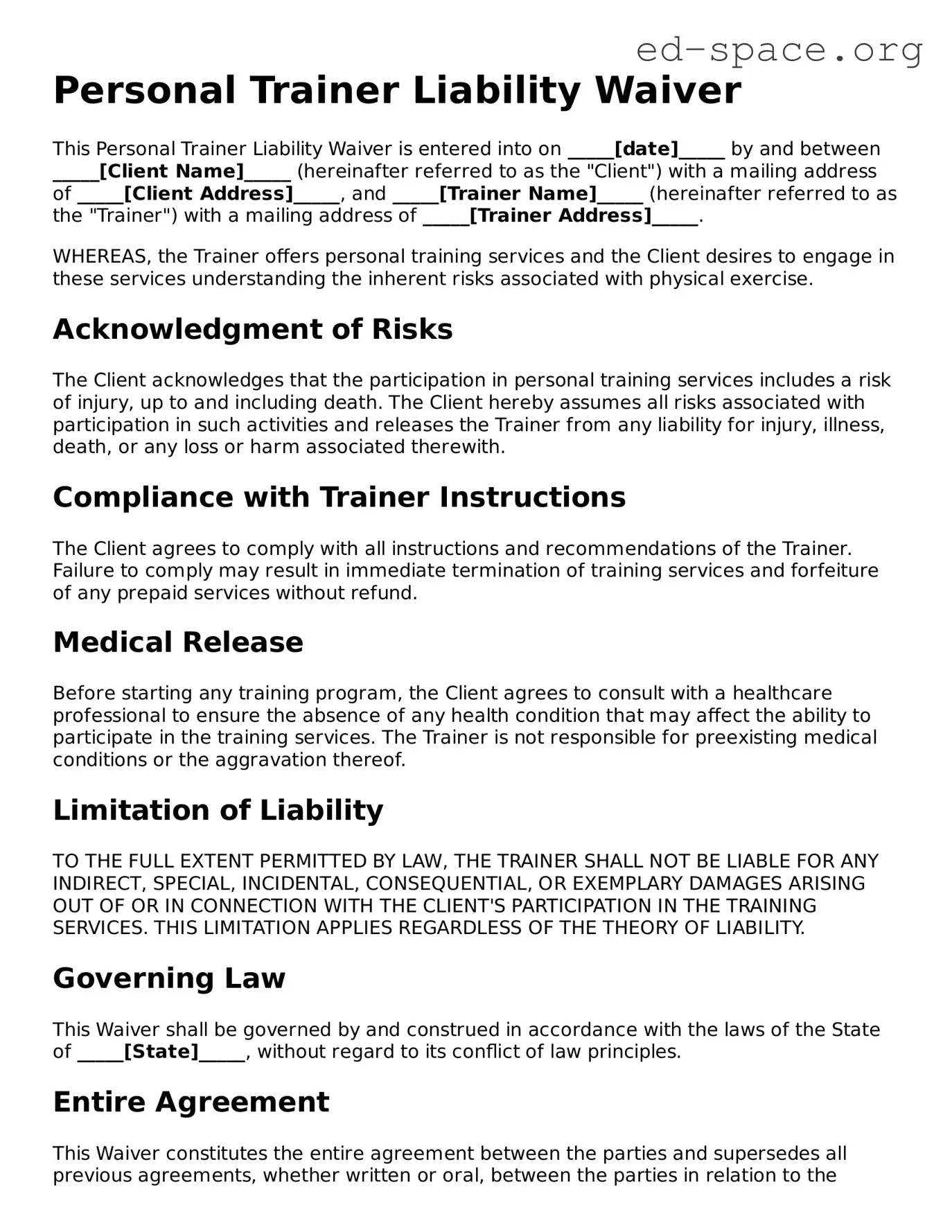Personal Trainer Liability Waiver
This Personal Trainer Liability Waiver is entered into on _____[date]_____ by and between
_____[Client Name]_____ (hereinafter referred to as the "Client") with a mailing address of
_____[Client Address]_____, and _____[Trainer Name]_____ (hereinafter referred to as the
"Trainer") with a mailing address of _____[Trainer Address]_____.
WHEREAS, the Trainer offers personal training services and the Client desires to engage in these
services understanding the inherent risks associated with physical exercise.
Acknowledgment of Risks
The Client acknowledges that the participation in personal training services includes a risk of injury,
up to and including death. The Client hereby assumes all risks associated with participation in such
activities and releases the Trainer from any liability for injury, illness, death, or any loss or harm
associated therewith.
Compliance with Trainer Instructions
The Client agrees to comply with all instructions and recommendations of the Trainer. Failure to comply
may result in immediate termination of training services and forfeiture of any prepaid services without refund.
Medical Release
Before starting any training program, the Client agrees to consult with a healthcare professional to ensure
the absence of any health condition that may affect the ability to participate in the training services.
The Trainer is not responsible for preexisting medical conditions or the aggravation thereof.
Limitation of Liability
TO THE FULL EXTENT PERMITTED BY LAW, THE TRAINER SHALL NOT BE LIABLE FOR ANY INDIRECT, SPECIAL, INCIDENTAL,
CONSEQUENTIAL, OR EXEMPLARY DAMAGES ARISING OUT OF OR IN CONNECTION WITH THE CLIENT'S PARTICIPATION IN THE
TRAINING SERVICES. THIS LIMITATION APPLIES REGARDLESS OF THE THEORY OF LIABILITY.
Governing Law
This Waiver shall be governed by and construed in accordance with the laws of the State of
_____[State]_____, without regard to its conflict of law principles.
Entire Agreement
This Waiver constitutes the entire agreement between the parties and supersedes all previous agreements,
whether written or oral, between the parties in relation to the subject matter hereof.
Signatures
IN WITNESS WHEREOF, the Parties hereto have executed this Liability Waiver as of the date first above written.
Client's Signature: ___________________________ Date: ____________
Trainer's Signature: __________________________ Date: ____________
